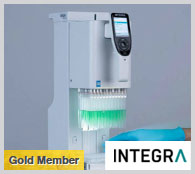Serum Iron Levels Measured Using Mobile Phone
By LabMedica International staff writers
Posted on 12 Dec 2013
Iron in blood serum has been visually detected and quantified quickly by processing photographs, taken with a conventional digital camera or Smartphone, of an iron colorimetric sensory polymer substrate. Posted on 12 Dec 2013
Routine blood analysis usually determines the amount of iron in blood serum using ultraviolet-visible spectroscopy and this method requires an iron-complexing reagent to form differentially colored compounds. These reagents include reductants, complexing agents, precipitating agents, and buffered solutions.
Biochemists at the University of Burgos (Spain) developed a technique consists in putting a drop of the fluid on the material, a thin disc half a centimeter in diameter and 0.1 mm thickness, waiting fifteen minutes and comparing the result with a standard. This can be done by sight alone, but if the film is photographed with a mobile phone, the concentration of this biologically and commercially very significant metal can be measured better.
The sensory materials were designed following a straightforward strategy. A proven iron organic chelator, called 8-hydroxyquinoline, was easily transformed into an acrylic monomer and further copolymerized with hydrophilic co-monomers to render a membrane comprised of a hydrophilic, gel-like polymer network. The film-like membrane generated was cut into small-diameter sensory discs. Thus, upon immersion of the sensory disks in blood serum, wine, and water, a color development was rapidly observed which could be easily correlated with the iron concentration of the samples. For verification, high-resolution electron-impact mass spectrometry (EI-HRMS) was carried out on a Micromass AutoSpec mass spectrometer (Waters Corporation; Milford, MA, USA) and other instruments.
Red, green, and blue (RGB) digital parameters obtained from photographs of the sensors were processed statistically using principal component analysis (PCA) and used to elaborate titration curves and quantify iron concentrations. Ferric ions in blood serum have been visually detected using only the naked eye by immersing a sensory disc into the sample for a few minutes. The iron concentrations detected are between 56 parts per billion (ppb) and 56 parts per million (ppm). The normal level in blood serum, obtained by centrifugation of the blood, is 0.8 to 1.8 ppm.
José Miguel García, PhD, the senior author of the study said, “It is a smart polymeric material which changes color based on the concentration of iron cations Fe2+ and Fe3+ in an aqueous medium. RGB [red, green, blue] information can be obtained directly from the phone and processed on a conventional computer to determine the levels of the cation according to the reference system.” The study was published on October 24, 2013, in the Journal of Materials Chemistry A.
Related Links:
University of Burgos
Waters Corporation












